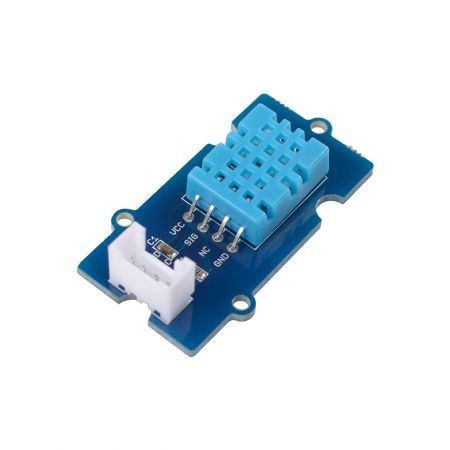Temperature and humidity, crucial metrics for measuring overall environmental quality, play a significant role in various fields such as agriculture, industry, buildings, offices, and server rooms. Temperature and humidity sensors, designed to measure these parameters, consist of humidity-sensitive and temperature-sensitive elements, converting these measurements into easily processed electrical signals.
Despite the advancements in modern science and technology, the precision requirements for measurements have increased. However, users often encounter the issue of temperature and humidity sensor drift over time.

Causes of Drift in Temperature and Humidity Sensors:
- Zero Drift and Temperature Drift: Drift in sensors can be categorized into zero drift and temperature drift. Both types have different impacts on measurement accuracy.
- External Interference: External factors, such as dust, oil, and harmful gases, can contribute to sensor drift over time, leading to reduced accuracy.
- Aging and Environmental Effects: Long-term usage and exposure to environmental conditions may cause aging, resulting in a decline in sensor accuracy. This is particularly evident in scenarios where sensors are subjected to varying temperatures and humidity levels.
- Material Elasticity: The fundamental principle of many sensors relies on the elasticity of materials. Over time, elastic fatigue may occur, contributing to sensor drift.
- Temperature-Induced Drift (Thermal Drift): Temperature changes can significantly impact sensor parameters. Thermal drift refers to variations in sensor characteristics due to temperature fluctuations.
Addressing Drift in Temperature and Humidity Sensors:
- Regular Calibration: Regular calibration is essential to correct any deviations caused by aging, external interference, or material elasticity. Manufacturers often recommend recalibration after a certain period.
- Temperature Compensation: Sensors equipped with temperature compensation mechanisms can mitigate the effects of temperature-induced drift. This feature helps maintain accuracy by adjusting for temperature variations.
- Proper Sealing and Maintenance: Protecting sensors from dust, oil, and harmful gases by ensuring proper sealing and regular maintenance can extend their lifespan and reduce drift.
- Replacement and Upgradation: Aging sensors that exhibit significant drift may require replacement. Upgrading to newer sensor models with improved designs and materials can also enhance accuracy.
In conclusion, while drift in temperature and humidity sensors is an inherent phenomenon, understanding its causes and implementing appropriate measures can significantly mitigate its impact. Regular calibration, temperature compensation, proper maintenance, and timely replacement contribute to sustaining accurate sensor readings.
Previous: The Role of Humidity Sensors in Diverse Industries
Next: Choosing the Optimal TVOC Sensor for Gas Detection





